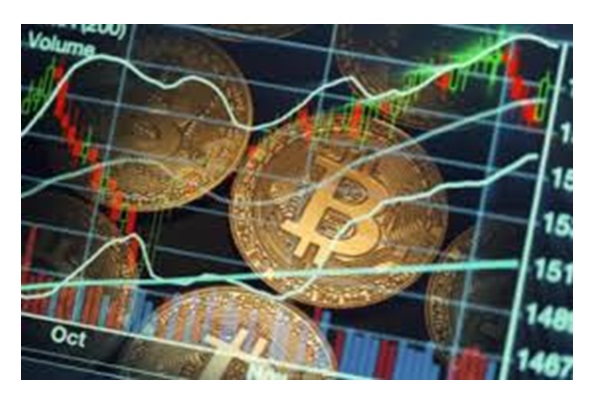Binance Coin (BNB) is the native cryptocurrency of the Binance exchange, which is one of the largest cryptocurrency exchanges by trading volume in the world. Binance Coin has been steadily growing in popularity and value, and it has become a vital part of the Binance ecosystem. In this article, we will take a deep dive into the technical roadmap of Binance Coin and explore its potential future developments. If you are looking for a safe and secure trading platform for Bitcoin, you can simply visit immediateconnect.org
Introduction to Binance Coin
Binance Coin is an ERC-20 token that was launched through an initial coin offering (ICO) in 2017. It is used as a utility token on the Binance exchange and is used to pay for trading fees, withdrawal fees, listing fees, and other fees on the platform. Binance also periodically burns a portion of the total supply of Binance Coin, which helps to reduce the circulating supply and increase its value.
Binance Smart Chain
One of the significant developments in the Binance ecosystem is the launch of Binance Smart Chain (BSC), a parallel blockchain that runs alongside the Binance Chain. BSC is built on the Ethereum Virtual Machine (EVM) and is compatible with the Ethereum network, which means that developers can use the same tools and resources to build applications on both chains.
The launch of Binance Smart Chain has brought several advantages to the Binance ecosystem. It has reduced the transaction fees on the platform, which makes it more accessible to users who want to trade with smaller amounts of cryptocurrency. BSC has also enabled the creation of decentralized applications (DApps) that can take advantage of the speed and low fees of the Binance network.
DeFi Integration
Another significant development in the Binance ecosystem is the integration of decentralized finance (DeFi) protocols. Binance has launched several DeFi products, including BinanceLaunchpool, which allows users to farm new tokens by staking Binance Coin, and Binance Liquid Swap, which is a decentralized exchange (DEX) that allows users to swap tokens on the Binance network.
Binance has also integrated with several third-party DeFi platforms, including PancakeSwap, a popular DEX on the Binance Smart Chain. The integration with PancakeSwap has enabled Binance users to trade a wide range of tokens and access liquidity pools on the platform.
NFT Marketplace
Binance has also announced plans to launch its NFT (non-fungible token) marketplace, which will allow users to buy, sell, and trade digital collectibles on the Binance network. NFTs have become increasingly popular in recent years, and Binance’s entry into the market could bring significant benefits to the ecosystem.
The Binance NFT marketplace will allow creators to mint their own NFTs and list them for sale on the platform. Users will be able to buy and sell NFTs using Binance Coin or other cryptocurrencies on the network. The launch of the NFT marketplace is expected to bring a new wave of users to the Binance ecosystem and increase the demand for Binance Coin.
Binance Card
Binance has also launched the Binance Card, which is a debit card that allows users to spend their cryptocurrency at any merchant that accepts Visa. The Binance Card is connected to the user’s Binance account, which means that they can top up their card with Binance Coin or other cryptocurrencies on the platform.
The launch of the Binance Card has made it easier for users to use their cryptocurrency in their daily lives. They no longer have to convert their cryptocurrency to fiat currency to make purchases, which can be time-consuming and costly. The Binance Card has also increased the use case for Binance Coin, as users can now use it to make purchases directly.
The future of Binance Coin looks bright, and the technical roadmap shows that Binance is committed to developing new features and integrating with the latest trends in the cryptocurrency space. The launch of Binance Smart Chain has brought significant advantages to the platform, and the integration of DeFi protocols and the upcoming NFT marketplace is expected to attract a new wave of users to the ecosystem.
The Binance Card has also increased the use case for Binance Coin, and it could pave the way for more mainstream adoption of cryptocurrency in the future. As the cryptocurrency space continues to evolve, Binance is well-positioned to take advantage of new developments and integrate them into its platform, which could further increase the value and utility of Binance Coin.
In conclusion, Binance Coin is more than just a utility token for paying fees on the Binance exchange. It has become an integral part of the Binance ecosystem, and its future looks promising as the platform continues to evolve and integrate with new trends in the cryptocurrency space. Investors and users should keep a close eye on Binance Coin and the developments in the Binance ecosystem in the coming years.
WATCH TOP VIDEOS FROM NIGERIAN TRIBUNE TV
- Let’s Talk About SELF-AWARENESS
- Is Your Confidence Mistaken for Pride? Let’s talk about it
- Is Etiquette About Perfection…Or Just Not Being Rude?
- Top Psychologist Reveal 3 Signs You’re Struggling With Imposter Syndrome
- Do You Pick Up Work-Related Calls at Midnight or Never? Let’s Talk About Boundaries







